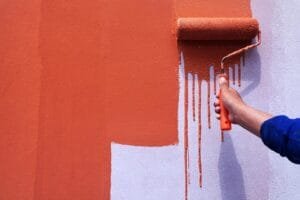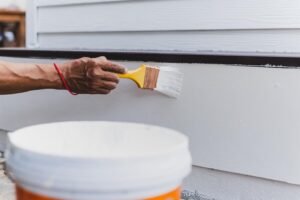Introduction to Long-Lasting Paint, Quality Paint
When considering high-quality paint, it is essential to understand the fundamental elements that contribute to its performance and durability. The quality of paint is not merely about its color but encompasses various factors that collectively influence its longevity, finish, and aesthetic appeal. High-quality paints are designed to endure exposure to the elements, resist fading, and maintain their vibrant colors over time. This durability makes them an ideal choice for projects requiring a long-lasting solution, such as residential and commercial applications.
The primary components of paint include pigments, binders, and solvents. Pigments provide the color, and their quality directly affects how a paint appears once applied. High-quality pigments are more resistant to UV rays, ensuring that your mithila home paint retains its color despite prolonged exposure to sunlight. Binders, on the other hand, act as the adhesive that holds the pigment particles together and allows the paint to adhere to surfaces.
A robust binder contributes to the film’s strength and flexibility, which are critical for avoiding cracking and peeling. Lastly, solvents help to dissolve the binder and allow for even application. As the solvent evaporates during the drying process, it leaves behind a solid layer that showcases the characteristics of the pigment and binder.
In addition to affecting the appearance and durability, the composition of these components plays a significant role in the application process. High-quality paints offer better coverage and a more uniform finish, reducing the need for multiple coats. This can be particularly advantageous when applying paint in spaces like a mithila home, where aesthetics and longevity are paramount. Understanding the components that constitute high-quality paint can empower consumers to make informed choices, ensuring that their investment yields optimal results.

Types of High-Quality Paints
When considering high-quality, long-lasting paints for your projects, it is essential to familiarize yourself with the various types available in the market. Each type of paint has its unique advantages, disadvantages, and optimal applications, which can significantly influence the outcome of your work. Among the most commonly used types are latex, oil-based, and acrylic paints.
Latex paints, often water-based, are known for their ease of use and quick drying times. They emit fewer volatile organic compounds (VOCs), making them a safer choice for indoor environments. Latex paints provide excellent flexibility, allowing for expansion and contraction, which helps to prevent chipping and peeling over time. They are ideal for walls and ceilings but may not adhere well to surfaces that require strong bonding, such as metal or glass.
On the other hand, oil-based paints offer superior durability and resistance to wear, making them suitable for high-traffic areas and surfaces that require frequent cleaning. They tend to adhere better to surfaces, providing a smooth, hard finish that is highly resistant to staining. However, they take longer to dry and release higher levels of VOCs, necessitating proper ventilation during application. Oil-based paints are particularly effective for trim, cabinets, and furniture, where a robust finish is critical.
Acrylic paints, while similar to latex in their water-based composition, contain acrylic resins that enhance their durability and color retention. They are versatile and can be used for various applications, from home interiors to outdoor settings. Acrylic paints provide excellent adhesion and flexibility, making them suitable for surfaces that experience temperature fluctuations. However, they may require a primer for optimal performance on certain substrates.
Ultimately, understanding the qualities and applications of each type of high-quality paint can guide you in choosing the right product for your needs. Whether you opt for latex, oil-based, or acrylic paints, selecting a well-suited option will ensure you achieve the desired aesthetic and longevity for your projects, such as those using mithila home paint.

Key Features of Long-Lasting Paints
Long-lasting paints are an essential consideration for homeowners, especially when seeking to maintain the aesthetics and functionality of their spaces over time. There are several key features that characterize these durable paints, with resistance to fading, chipping, and mold growth being paramount. For instance, high-quality paints such as mithila home paint are formulated to withstand harsh environmental conditions, ensuring that colors remain vibrant and true throughout the years. Fading can detract from the overall appearance of walls and surfaces, making color retention a critical feature.
Chipping, or the peeling of paint from a surface, is another major concern. This issue often arises due to improper application techniques or the use of lower-quality products. A quality paint product, such as mithila home paint, is designed to adhere firmly to surfaces, reducing the likelihood of chipping even in high-traffic areas or locations subject to wear and tear. Moreover, the application of paints with proper priming and preparation techniques enhances adhesion and longevity, thereby prolonging the lifespan of the paint.
The prevention of mold growth is also vital for paints exposed to humidity or moisture, particularly in bathrooms and kitchens. Mold not only affects the appearance of the painted surfaces but can also pose health risks. Thus, selecting paints engineered with antimicrobial properties is essential to ensure that they remain pristine and free from fungal infestations. This is especially important for those residing in humid climates where mold growth is common.
Finally, environmental consideration plays a significant role in the selection of long-lasting paints. Factors such as exposure to sunlight, temperature fluctuations, and humidity levels can affect the performance of paints, whether they are used indoors or outdoors. Understanding these conditions allows homeowners to make informed decisions when choosing the right type of paint; for instance, mithila home paint products may offer a range tailored for various environmental challenges, ensuring lasting results.

Factors Affecting Paint Longevity
The longevity of any paint finish, including products like mithila home paint, is influenced by several key factors that must be carefully considered prior to application. Understanding these factors aids homeowners in selecting the appropriate paint and ensuring that their surfaces retain a fresh appearance for an extended period.
One of the most critical aspects is surface preparation. Before applying any coat of paint, it is essential to clean and prepare the surface thoroughly. This includes repairing any damage, removing old paint, and ensuring the surface is free from dust, grease, and moisture. Proper surface preparation promotes better adhesion of the paint, reducing the likelihood of peeling and chipping over time. When using high-quality paints, including mithila home paint, the benefits of meticulous preparation become even more pronounced, leading to enhanced durability.
Environmental conditions also play a significant role in the longevity of any paint application. Factors such as humidity, temperature fluctuations, and exposure to sunlight can affect how well paint adheres and performs over time. In regions with extreme weather conditions, selecting paints designed to withstand such challenges becomes crucial. Additionally, surfaces exposed to continuous moisture or UV rays may require specialty formulations for optimal performance. Mithila home paint is designed with various environmental factors in mind, making it suitable for diverse applications.
Finally, ongoing maintenance significantly impacts the lifespan of paint. Regular inspections, prompt repairs, and simple cleaning practices can help prevent deterioration. Homeowners should be vigilant about maintaining painted surfaces to extend their life. By taking care of the paint job through routine upkeep, the exceptional quality of products like mithila home paint can be fully realized, ensuring that the finishes not only look good but last for years to come.

How to Choose High-Quality Paint
Selecting high-quality paint for your home is a critical decision that can greatly influence the overall aesthetic and durability of your walls. A primary consideration should be the brand reputation. Established brands often invest in research and development programs, producing paints that meet higher standards regarding performance and environmental safety. Reviews and feedback from other consumers play an essential role in determining a brand’s reliability.
Cost is another vital factor to weigh when choosing paints such as mithila home paint. While it may be tempting to opt for the cheapest option available, it’s important to understand that lower price points can often mean a compromise in quality. High-quality paints typically have better coverage, reduced need for multiple coats, and improved longevity, which can ultimately save money over time by reducing maintenance costs
Moreover, checking for certifications can help your decision-making. Certifications, like those from Greenguard or LEED, indicate that the paint complies with strict safety and environmental standards. These certifications reflect the brand’s commitment to sustainability, making them favorable choices not only for aesthetics but also for the planet.
User reviews provide valuable insights into how a paint performs in real-world settings. Observing how others rate attributes like coverage, drying time, and ease of application can guide you toward making informed choices. Look for reviews that discuss long-term performance rather than just initial impressions, as this can influence your satisfaction with the mithila home paint or any other product you choose.
Ultimately, investing your time in research and considering these practical tips will help you select high-quality paint that meets your specific needs and expectations. By making an informed choice, you ensure that your interior or exterior surfaces maintain their beauty and resilience over time.

Application Techniques for Best Results
Achieving optimal results when applying high-quality paint, such as mithila home paint, hinges on employing effective application techniques. Preparation is the cornerstone of a successful painting project. Begin by thoroughly cleaning the surfaces to be painted. Remove dirt, grease, and any loose material that may hinder paint adhesion. If necessary, sand surfaces to create a smooth, even base, optimizing the paint’s ability to cling effectively.
Choosing the right tools and equipment is equally paramount. High-quality brushes and rollers specifically designed for the type of paint you are using will help in achieving a professional finish. For instance, synthetic brushes work well with water-based paints, while natural bristle brushes are ideal for oil-based finishes. Rollers with appropriate nap lengths can cover larger areas efficiently, reducing applications time while providing an even coat.
When considering application methods, each technique—brush, roller, and spray—has its advantages. Brushes allow for precision, perfect for corners and detailed work. Rollers are excellent for flat surfaces, providing quick coverage of large areas. Spray painting is often faster and can deliver a smooth, even finish, especially on intricate surfaces. However, good ventilation and protective gear are essential due to the fumes and inevitable overspray associated with this method.
To prevent common mistakes, always follow the manufacturer’s instructions on the mithila home paint label. This includes guidance on drying times between coats and recommended number of coats for optimal durability and color richness. Avoid painting in extremely hot or cold weather, as it can significantly affect the outcome. By adhering to these practices, you can ensure a beautifully painted space that will last for years to come.
Maintenance Tips for Long-Lasting Paint
Regular maintenance of painted surfaces is essential for preserving the vibrancy and longevity of your paintwork. One of the most effective strategies is to engage in routine cleaning, which helps remove dirt and dust that can dull the finish over time. For surfaces painted with mithila home paint, it is advisable to use a soft cloth or sponge along with a mild detergent mixed with water. This gentle approach ensures that the paint remains intact without causing any damage. Avoid using abrasive cleaners or scouring pads, as they can scratch the surface and compromise the overall sheen.
Additionally, performing touch-ups is an important maintenance tactic that can address minor damages before they escalate. Inspect your walls periodically for any chips or scratches, and be ready to apply a small amounts of mithila home paint to these areas. Use a small brush to ensure precise application, blending the newly applied paint with the surrounding area. Keeping a small amount of leftover paint for such touch-ups is advisable, as it guarantees an exact match in color and finish.
Preventive measures also play a crucial role in maintaining the integrity of painted surfaces. It is recommended to avoid exposing painted areas to excessive moisture, direct sunlight, or extreme temperatures, as these conditions can lead to rapid paint deterioration. For outdoor surfaces, consider using protective coverings during inclement weather to shield against potential damage. Indoors, ensure proper ventilation to minimize humidity levels, which can be detrimental to the painted finish over time.
Incorporating these maintenance strategies will not only enhance the appearance of your painted surfaces but also extend the lifespan of your mithila home paint. Taking a proactive approach in caring for your paintwork will result in a consistently fresh and vibrant look for many years to come.

Cost Considerations: Is High-Quality Paint Worth It?
When embarking on a painting project, one of the most critical aspects to consider is the cost of the materials involved. While high-quality paints, such as mithila home paint, often come with a higher initial price tag, evaluating the long-term benefits can reveal a more favorable financial outlook. Investing in premium paint may initially seem daunting; however, the implications of quality should not be underestimated.
High-quality paints are formulated with superior ingredients that not only enhance their aesthetics but also improve their durability and longevity. This means that mithila home paint and similar premium options can withstand environmental factors better than lower-quality paints. As a result, the frequency of repaints and touch-ups decreases significantly compared to less durable alternatives. Over time, homeowners can save money not only on paint purchases but also on labor costs associated with repainting, which often requires professional services or considerable time on the homeowner’s part.
Moreover, high-quality paints provide excellent coverage, which can lead to requiring fewer coats during application. This can be particularly beneficial when considering the cost of labor and the time investment required for additional layers. By using mithila home paint, individuals may find that the initial outlay is mitigated by the savings accrued from reduced application efforts and the long-term durability of the finish.
In addition to the economic factors, investing in high-quality paint also reflects a commitment to maintaining the integrity and appearance of one’s home. Ensuring that surfaces are protected from wear and deterioration not only enhances aesthetic appeal but can also positively impact property value. Therefore, while high-quality paints may require a heftier upfront investment, they often prove to be a cost-effective decision in the broader context of home maintenance.
Conclusion and Final Thoughts
Throughout this guide, we have examined the crucial role that high-quality, long-lasting paints play in enhancing the aesthetics and durability of various surfaces. Emphasizing the significance of selecting the right painting products, we specifically highlighted mithila home paint as a prime example of premium quality. Such paints not only elevate the visual appeal of a space but also ensure that the finish lasts for years, ultimately saving time and costs associated with frequent repaints.
We discussed various attributes that characterize high-quality paints, including their resistance to weather elements, ease of application, and the breadth of color options available. It is essential to understand that the right choice can make a difference between a vibrant, eye-catching home environment and a dull, faded appearance that requires constant upkeep. Mithila home paint stands out with its exceptional coverage and adherence, thereby reducing the need for multiple coats and ensuring a satisfied end result.
Moreover, we explored how long-lasting paint contributes to a healthier indoor environment by minimizing harmful emissions. Choosing high-quality paint options not only benefits homeowners aesthetically but also supports sustainability by potentially lowering maintenance and waste in the long run. By making informed decisions, consumers can invest in paints that offer both visual and functional longevity.
In closing, we encourage readers to prioritize quality over cost in their painting projects. By selecting high-quality, long-lasting paints like mithila home paint, individuals can enjoy a beautiful and enduring living space that reflects their personal style while providing a sound investment for years to come. The transformative power of well-chosen paint should not be underestimated, as it speaks volumes about the overall character of a home.

